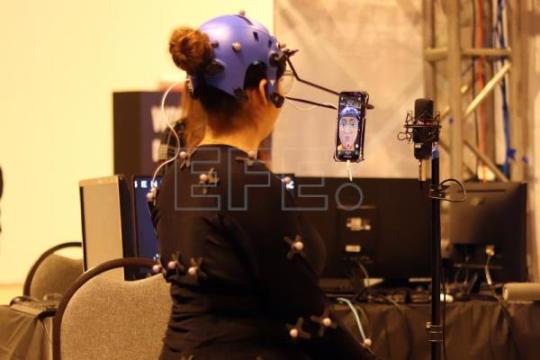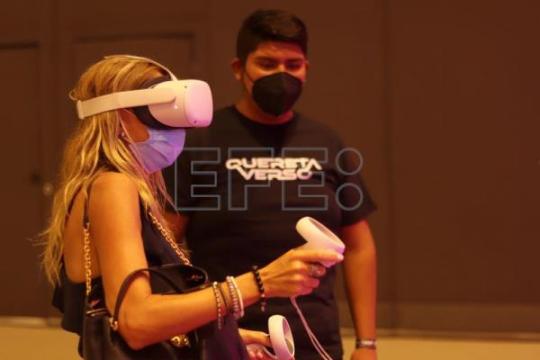#Kuries software
Explore tagged Tumblr posts
Text
#fromsoft#from software#armored core#king's field#evergrace#lost kingdoms#otogi#metal wolf chaos#chromehounds#echo night#shadow tower#kuri kuri mix#murakumo#ninja blade
84 notes
·
View notes
Text

#from software#evergrace#lost kingdoms#kuri kuri mix#eternal ring#otogi#demon's souls#kings field#echo night#kuon#i mean theres more games but those are what matter to me#this reminds me i still need to play ninja blade and enchanted arms#fromsoft#hypatia rambles
32 notes
·
View notes
Text
Cutest Birthday Boy✨


—also I might have changed the cake’s design and magically that solved my crashing issue like 😶 okay I get it, little space bunny, you didn’t like the other one✨🐰
#love and deepspace#xavier love and deepspace#lads xavier#love and deepspace xavier#but kuri thats not how software works#technology is weird mate idk
15 notes
·
View notes
Text

Recent update. An homage to one of my favorite PS2 games. Can you believe these characters were designed by FromSoftware Inc.? Find and play The Adventures of Cookie & Cream (aka Kuri Kuri Mix in Japan) and share your experience. This piece was inspired by one of their adorable advertisements in Japan. Support these artists.
19 notes
·
View notes
Text


thank you gift for @/taptroupe for this.
#sfw#cookie & cream#The Adventures of Cookie & Cream#Kuri Kuri Mix#bunnies#fromsoftware#from software#art#artwork#art and design#video game#video games
9 notes
·
View notes
Photo

‘Kuri Kuri Mix’ [aka: ‘The Adventures of Cookie & Cream’]
[PS2] [JAPAN] [MAGAZINE] [2001]
Dengaki PlayStation, 01/12/2001 (#165)
Scanned by kitsunebi77, via RetroMags
#gaming#advertising#kuri kuri mix#the adventures of cookie and cream#ps2#from software#action#adventure#anthropomorphic#japan#video games#2001
383 notes
·
View notes
Photo



Kuri Kuri Mix a.k.a. The Adventures of Cookie & Cream, From Software, PlayStation 2, 2000
#I present this one as an example of worse US box art a lot#kuri kuri mix#the adventures of cookie and cream#ps2#playstation 2#retrogaming
25 notes
·
View notes
Text

Avinash Kuri is a famous actor in India. He has an educational qualification in bachelor of engineering in Computer Science. He worked as a software engineer in John Deere for 3 years. Besides acting in films and theater plays he has been active in behind-the-camera work also, like assisting in direction, casting, etc. Avinash wrote that he wanted to be a soldier in the army and did not share his hidden want of becoming an actor. He completed engineering, grabbed a job, got an early promotion call, and at that very moment decided to call it quits. Acting was is his passion, and he went on to do everything he could to achieve it.
#Indiantalent#inspiringstories#motivationalstories#knowmebetter#avinashkuri#popularindianactors#famousactorinindia#famousheroinindia#mostpopularactorinindia
2 notes
·
View notes
Photo

via CoolBoxArt on Twitter: “Kuri Kuri Mix / Print ad / From Software / 2000″
168 notes
·
View notes
Text
my fave from software games in no particular order are; Evergrace, Kuri Kuri Mix, Lost Kingdoms and Bloodborne
#i bought copies of ninja blade and enchanted arms but have yet to play them#i also wanna play deracine sekiro and echo night but havent yet#hypatia rambles
3 notes
·
View notes
Video
Chit fund Accounting software demo in hindi: Websoftex
0 notes
Link
Websoftex is an online software provider for chit fund companies all over India.It is robust and secure. All features are incorporated as per Chit Fund Act 1982.It keeps track of chits and make report management easy.It is equipped with high security and features which speed up the work and reduce operational time.Along with software a website and Android Mobile application is provided for both subscriber (Member) and chit collector.Contact +919765988588 / +919916807666 in case of any queries regarding software. Visit http://websoftex.com/development/chitfund-software.php for more details.
#Chit fund software#kuries software#Chit fund software in south India#Chit fund mobile app collector
0 notes
Text
The journey of a Software Engineer becoming an Actor: Avinash Kuri!

A school kid who had so much love and passion for acting but ended up becoming a Software Engineer. Again he left his job after 3 years of experience to follow his passion for acting. Avinash took almost a decade to decide what he actually wants to do and now he is a great actor in Bollywood Industry. He started with small theatre plays and then went to small screens. Now he is soon going to achieve another milestone of his life as he is going to be featured in the movie 'Nirmal Anand ki Puppy'. It.s an inspiring short story with moral lessons.
1 note
·
View note
Text
Project Idea: Dementia Assistant
Dementia is a debilitating condition in which the patient, over time, eventually loses cognitive function. However, it is usually a slow decline of the person’s mental ability. This means that, for a time, it may be appropriate for the patient to have a caregiver, but not necessary for the individual to live in a hospital or receive care 24/7. This caregiver could either be a professional, a family member, or a client friend.
According to a research project from St. Luke’s hospital, caregivers of patients with dementia deal with several stressors in their day-to-day work. The most significant of these stressors, by a large margin, is “Inability to manage stress levels due to lack of support from family or community and/or poor knowledge of the dementia condition.” This indicates that many caregivers are likely untrained about how to best handle their patients, and become stressed to the responsibility and necessary time placed into the subject’s care.
There are several important factors a caregiver must take into account during their work. For example, the caregiver needs to deal with “personality changes” in the patient, as well as instances in which the patient may not even recognize his family, according to alzheimers.net. The emotional toll, then, can be significant on the caregiver.
To solve this problem, I propose a robot that can assist these nonprofessional (and possible professional caregivers) in lowering their stress by taking away some of the responsibility and emotional requirements involved in caregiving for patients with dementia. In particular, this robot will be:
· A routine-memory aid for the patient.
Part of the work a caregiver does is assist their patients in maintaining a normal schedule. That means eating, taking medicine, exercising, and doing other important activates that maintain the patient’s wellbeing. For example, according to caregiver.org, a caregiver may ask their patient what color of shirt they would prefer to wear during the morning.
Our robot can help assist the caregiver by asking these questions in the morning, and relaying important information to the caregiver. For example, the robot could let the patient know that he should take his medicine, and report back on whether or not it saw the patient do so to the caregivier.
· Social interaction and instant help for the patient.
The robot would be able to interact socially with a dementia patient, able to converse in very light, basic conversation. This shouldn’t be a large issue for patients, since they will end up needing simple conversation as their mental capacity deteriorates. As well, the robot can be a portal for the patient to ask general questions to Google, care-specific questions that the robot can answer, as well as questions that need to be relayed to the caregiver directly.
This can free time for the caregiver, who may want to focus on other important parts of care, or otherwise just enjoy more free time. Further, the robot may be able to answer questions regarding who the dementia patient is/who the caregiver is as the patient begins to lose memory of her/her life. This can reduce emotional strain on the caregiver, as the caregiver will not need to remind the patient of who he/she is (and won’t need to deal with the emotional consequences of doing so as after as previously).
· A monitor for patient behavior.
The robot should use advanced computer vision techniques to determine the mood of the patient, and can alert the caregiver if something is wrong or the patient is acting unruly. This way, not only will the patient be able to get help more quickly should something go wrong, but the caregiver can feel more comfortable leaving the patient alone for longer periods of time. This should relive caregiver stress, since he/she will not need to be around their patient all the time or otherwise constantly think about their care.
It is important to note that this robot is a good solution to this problem above other sources because it’s an effective interaction tool. The only viable competitor to this robot would be something like an automated personal assistant (ex. Google Home), since a voice-based interaction system is likely most ‘natural’ and easy to use for someone with deteriorating mental ability. This robot has several features that make it better than a standard, stationary voice assistant with extra caregiving features. First, we’re using the Kuri mobile social robot, which will be able to follow the patient and talk to him/her. As well, the robot has some facial movement/shows some emotion. These factors will allow the patient to feel a strong emotional connection (listed as important by many caregiving sources) with the robot and accept it as one of his/her caregivers, whereas it may be hard to form an emotional connection with a speaker (Google Home) with an assistant built in. One other major issue with the voice-assistant form-factor as it is today, is that voice assistants sit on a desk. The mobility of this robot allows it to effectively monitor the patient, as well as interact with him/her at all times via only speech (no carrying a phone or looking at a speaker to talk). The mobility also opens up the possibility to future iterations of the robot being able to help with more caregiving tasks (for example, a future version could get mobile manipulator functionality) without significant development effort to change existing software to take into account that the robot is no longer stationary.
Building any specific subset of functionality should be feasible given the time constraints and material constraints of the Capstone. Most of the above has already been accomplished using Machine Learning by large corporations. This is a large asset to us, since it should be feasible to hook into APIs (like the Microsoft emotion detector: https://azure.microsoft.com/en-us/services/cognitive-services/emotion/) to power a large portion of our “intelligent software.” As well, voice recognition software already exists that should be able to power our robot’s human-computer interface. Also, telecommunication tech already exists that can be hooked up to our robot (so that the patient can call their caregiver at any time and talk through the robot). Further, using the physical capabilities of the Kuri mobile social robot, we should be able to constantly “monitor” the dementia patient while at the same time always give them a reliable companion when they need help.
It is notable, however, that all of this functionality may not be feasible within 10 weeks; as such, we will likely need to pick and choose what to include and exclude based on group strengths and time taken to complete each piece.
Sources:
https://www.beckershospitalreview.com/quality/10-guiding-principles-for-patient-centered-care.html
http://www.nuhs.edu.sg/wbn/slot/u3691/Scholarly%20Activity/20150515_Laura%20Issues%20faced%20by%20Caregivers%20of%20Persibs%20w%20Dementia.pdf
https://www.caregiver.org/caregivers-guide-understanding-dementia-behaviors
https://www.alzheimers.net/caring-for-someone-with-dementia/
3 notes
·
View notes
Text
Project Idea: KeikiBot: An Early Childhood Education Bot

Problem Statement: It is commonly understood in the neuroscience community that the first few years in a child’s life has a tremendous on brain development. According to The Education Corner, “The future success of every child is in many ways determined before he or she turns 8. During those early years, how that child learns and develops — mentally, emotionally and socially — is critical”. The very first learning experiences have substantial consequences on a child’s cognitive and social development. According to sources like https://www.naeyc.org/resources/pubs/yc/mar2017/teaching-emotional-intelligence, teaching emotional intelligence as part of an early childhood education can be pretty challenging. Learning good social behaviors and cues can require a series of positive and negative reinforcements. Additionally, for only children who haven’t necessarily already had the opportunity to interact with siblings, this can be especially challenging. Putting a large focus on early childhood nurturing is a hugely important societal investment, since it will largely affect the success of a future generation.
A lot of life is centered around various social constructs. Functioning effectively in these sorts of environments requires more than just an academic intelligence; emotional intelligence, also known as Social Intelligence, is maintaining a balanced life with physical, mental and emotional health. EQ involves being able to identify one’s own emotions, controlling and adapting emotions, using emotions to motivate appropriate actions, discerning the feelings of others and building relationships with others. Many studies show that EQ is a major driver of success, and though it comes more naturally to some than others, it is an inherently learnable skill. Proposed robot-based solution: The use of social robots can augment early childhood education programs. By establishing key social behaviors in toddlers with the use of social robots, emotional intelligence knowledge can be successfully assimilated as a key portion of early education.
These five key EQ metrics can be addressed:
Self-Awareness
Self-Regulation
Motivation
Empathy
Social Skills
Empirical evidence shows that many young children interact with humanoid robots as creatures, giving an interesting avenue to instill some key desirable social behaviors. These sorts of robots could be present in classrooms and homes and act as social companions as well as educational tools.
Feasibility: Introducing a social robot to interact with young children would require a robot that could perceive the face/emotions/reactions of a young child, and provide some sort of an audio or physical movement response. Kuri is a social robot, originally intended for companionship, making it a good choice for this sort of project. KeikiBot does not need to necessarily grasp or move anything, but could potentially provide some sorts of physical, positive reinforcements, such as gently patting a child on the back, or giving hugs. I think with the integration of some sorts of facial emotion recognition software and audio processing, the Kuri Robot would more than suffice for the project of providing emotional intelligence feedback to small children via interactions. In order to limit the scope of this realm for ten weeks, it would be cool to gameify social situations such that a child playing with the social robot can quickly learn.
1 note
·
View note
Video
tumblr
Central Mexico Lures Videogame Industry with Fair
The central Mexican city and state of Queretaro, the headquarters for some of the country’s main industries, on Wednesday kicked off the “Queretaverso,” an event whereby Mexico is hoping to attract the videogame sector and other creative industries.
Mexico represents between $1.5 billion and $2 billion of the Latin American videogame sector’s total estimated value of $7 billion according to the director of Altered Ventures
At Queretaverso, which will run until Aug. 5 at the Queretaro Convention Center, developers, universities, companies, investors and entrepreneurs will all gather to attract an industry that on the global level is valued at some $180 billion.
The director of Altered Ventures emphasized Queretaro has a proven tradition of industry creation, just as came about decades ago with the automotive and aerospace industries, a double feat that could be repeated now in the software sector.
“(The state) has an individual tradition of taking in its hands … the creation of the future, which I think can be something really replicable in other industries. Not only Queretaro, all of Mexico, can become a development region.”
Within the framework of the industry fair, the municipality of Queretaro announced the creation of the “Bloque” Innovation and Creative Technology Center, a public space designed to facilitate access to new technologies, close the digital gap in society and foster technological development.
“This is the moment of the immersive technology industry, the metaverse, in which we must participate (and) position ourselves as one of the most important hubs in Latin America,” said the mayor.
“We want young people to launch (businesses), we want new unicorns to emerge from our country here,” he said.
Meanwhile, Queretaro state Gov. Mauricio Kuri emphasized the importance of helping this industry to take things “to the next level.”
“You have to back technology (and) innovation and not see it as something that can only be done in other countries,” he said.
Among the attendees at the fair were young people such as a software engineering student at the Queretaro Autonomous University and one of those who sees her future in the creative industries.
“(You have to come) to see more or less what you want to specialize in when you get a little older, the working and job opportunities. (In Mexico) we’re already very advanced but I think that we can still move forward a great deal more,” she said.


Visitors samples videogame technology at the Queretaverso videogame and innovative technology fair in Queretaro, Mexico, on Aug. 3, 2022
#🇲🇽#STEM#mexico#queretaro#Queretaverso#video games#games#latin america#technology#Queretaro Convention Center#industry fair#Bloque Innovation and Creative Technology Center#metaverse#Mauricio Kuri#Queretaro Autonomous University#queretaro mexico
0 notes